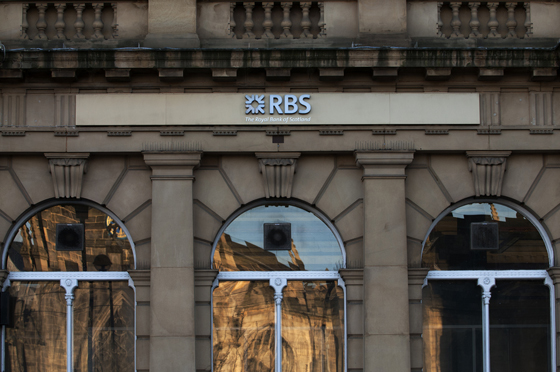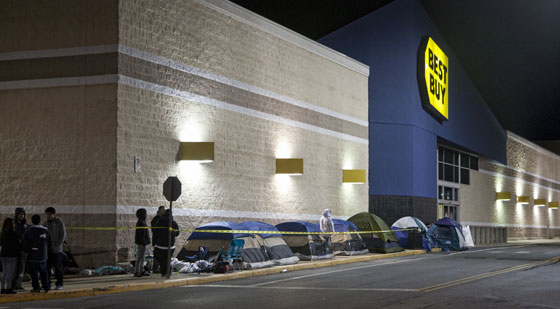Yesterday in London, executives of the Royal Bank of Scotland testified in front of a Parliament commission of banking standards. The topic at hand was of course the much-publicized Libor rate-rigging scandal that cost RBS more than $600 million in fines from the UK’s Financial Services Authority, the U.S. Commodities and Futures Trading Commission, and the U.S. Department of Justice.
In the hearing, CEO Stephen Hester was quick to note that the scandal was the product of unscrupulous behavior by the firm’s employees. “The behavior was the disgraceful failure of individuals,” testified Hester. But he also didn’t hide from the fact that his company failed to detect the rate rigging. “We were slow to recognize that behavior and catch it,” he said at the hearing.
The FSA’s director of enforcement and financial crime, Tracey McDermott, put it a little more strongly. “During the course of the FSA’s work on Libor, RBS provided the FSA with an attestation that its LIBOR related systems and controls were adequate,” said McDermott in statement. “This was not correct. The FSA takes it very seriously when firms tell us they have appropriate systems but do not.”
McDermott went on to point out the effect that all this has on whole investment banking sector. “The extent and nature of the misconduct relating to Libor has cast a shadow on the reputation of this industry, and we expect firms to take steps to ensure that this can never happen again. This is the third penalty we have imposed in relation to Libor-related misconduct. The size and scale of our continuing investigations remains significant.”
John Hourican, who headed RBS’s investment banking division before resigning last week, said that the taxpayer-bailed-out bank was on “cardiac arrest” given all the troubles that began in 2008, so it had to “prioritize dealing with the existential threat to the bank.” That is what may have led to the breakdown in controls that subsequently led to the rate rigging going on under management’s nose.
The company was simply too busy dealing with other, more-pressing threats to pay any attention to what a rate-rigging possibility that some in the bank considered an impossibility.
According to a Wall Street Journal report, former investment banking head John Cameron believes this left the company exposed to a type of behavior not unexpected of traders.
RBS’s former head of investment banking, Johnny Cameron, who left the bank in early 2009, said traders at banks involved in the attempted rate manipulation had more in common with each other than other bank workers, and that their behavior seemingly had little to do with the firms they worked for.
It is “as much about the culture of traders and people who trade things than any bank,” Mr. Cameron said in his testimony to the committee.
He said RBS’s risk managers failed to recognize the potential for traders to influence submissions used to help set interest-rate benchmarks, and that the failure highlighted why traders need “tight and close management.”
“I do think that traders have a particular approach to life and need much tighter controls. By and large, those controls are imposed. What happened in this case was that the risk managers didn’t recognize this as a risk, and those controls were not there,” Mr. Cameron said.
In short: traders are going to be traders and somebody needs to be watching them — but, in this case, nobody was.
Perhaps that vulgar reality about the banking world is what is motivating two other financial sector giants to move away from some of their riskier trading activities, according to the New York Times blog Dealbook.
First, it has this to say about Barclay’s recent decision to lay off 3,700 employees.
Barclays announced a major restructuring that will eliminate 3,700 jobs and close several business units, as the bank reported a big loss in the fourth quarter of 2012.
The overhaul of its operations comes after a series of scandals at the bank, including the manipulation of benchmark interest rates, which led to the resignation of the firm’s former chief executive, Robert E. Diamond Jr.
In a bid to reduce its exposure to risky trading activity, Barclays plans to close a number of operations in Europe and Asia, including a tax-planning unit that has been criticized for tarnishing the firm’s reputation.
“There will be no going back to the old way of doing things,” the chief executive, Antony P. Jenkins, told reporters at a news conference in London on Tuesday. “We will never be in a position again of rewarding people for activities inconsistent with our values.”
Then, Dealbook notes the following regarding UBS’ decision to part ways with the former head of its investment banking.
Carsten Kengeter, the former head of UBS‘ investment bank, has been on the outs at the Swiss banking giant for some time. On Tuesday, the bank announced that he was resigning.
Mr. Kengeter has been head of the bank’s non-core division, which oversees the assets that the bank is hoping to unload as it tries to exit higher risk banking activities.
But when he was running the investment bank, Kweku M. Adoboli, a trader in the London office, was accused of authorized trading that led to a $2.3 billion loss for the bank. Mr. Adoboli was eventually found guilty of fraud and sentenced to seven years in prison.
The trading loss raised serious questions about the firm’s oversight and led to the resignation of Oswald J. Grübel, the chief executive of UBS. Also during Mr. Kengeter’s time at the investment bank, UBS became ensnared in an investigation into the manipulation of the global interest rate benchmark Libor, or the London interbank offered rate.
There may be no direct thread running through these announcements.
It could all be a coincidence.
But as regulators continue to scrutinize those who fail to detect the risky, illicit behavior of those working within their firms, it seems as though some banks are starting to embrace the risks of their core business over those that are more difficult to oversee.




